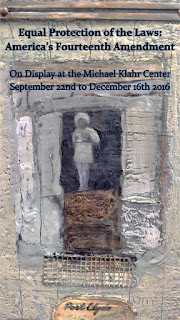Despite the fact that my career rests on social media, I’m all for throwing social media in the trash today.
| Wreck of the S. S. Ethie, oil on canvas, by Carol L. Douglas. Available. |
Like most of you, I woke up this morning wondering whether we have a president. Apparently not; most states were still counting as of 6 AM. I’m 61 years old and this is the first time I can remember this happening. I think we can take it as read that we’re in an historically-important moment.
We’re an almost-evenly divided nation. That means that the side that wins ought to be at least aware of the thoughts, ideals and feelings of the side that loses. If the past few decades are any indication, the winners will not. They will act as if their slim margin is a mandate.
 |
| The Dooryard, oil on canvasboard, by Carol L. Douglas. Available. |
I’m very conservative, but I lived most of my life in staunch Democrat country: I was raised in working-class Buffalo and lived in New York during the decades when it morphed from being a swing state to being reliably blue. I’m accustomed to living, working, eating, playing and praying with people with radically-different views from mine. Until recently, it was never a problem. It shouldn’t be.
This should be obvious to any thinking person, but it’s apparently not, so I’m using my blog to state it: your political opponents are as thoughtful, smart and kind as you. That’s true for good or ill.
My friend Brenna asked recently what we planned to do after the election. “Oh, either gloat or riot,” I snarked. I was joking, but sadly, some of my fellow citizens haven’t worked their way past these options. The media will gleefully report on their antics, and the rest of us will chatter about what it means.
| Beaver Dam, oil on canvasboard, by Carol L. Douglas. Available through Maine Farmland Trust Gallery. |
We humans have only two ways to reconcile our differences: we either talk them out or we split up. Last time the latter happened here, it was a bloody mess: 650,000 died in our Civil War. That was 2.1% of the population. Extrapolate to our current age, and we’d be talking almost seven million people—a holocaust by any measure.
Our only rational tool is civilized conversation, but too many of us live in echo chambers. Modern media encourages that—it surrounds you with the news, people and facts you want to hear.
Leon Festinger was the American social psychologist who pioneered the ideas of cognitive dissonancein a seminal 1956 book, When Prophecy Fails. Festinger had observers infiltrate a cult to see what would happen when the date of a doomsday prophecy came and went. The book explains how people can hold onto discredited ideas in the face of obvious contrary evidence.
| Talking with Michelle, oil sketch by Carol L. Douglas. She’s a long-term poll monitor, bless her heart. |
Clearly, there’s strength in numbers. As Festinger wrote, “If more and more people can be persuaded that the system of belief is correct, then clearly it must after all be correct.” Festinger did his research within a cult, but today he would find fertile ground on the internet, where all our social biases are confirmed by the ambiguous workings of artificial intelligence.
At the same time, another group of psychologists were pioneering an idea they took from George Orwell‘s biting dystopian novel, Nineteen Eighty-Four. Groupthink is a phenomenon that occurs when our need for harmony starts overriding the evidence before our eyes. Once again, there is momentum in numbers; the odd man out either starts thinking like the group, or he’s pushed out entirely. I doubt there are many adults who haven’t experienced this somewhere in their work or personal lives.
But we’re still capable of independent thinking, we humans. We have a choice—we can spend our days watching TV and surfing the Internet and getting more and more anxious, or we can turn the machines off. We can paint, read, pray, walk the dog, and talk to our real-world friends. Despite the fact that my career rests on social media, I’m all for throwing social media in the trash today.













